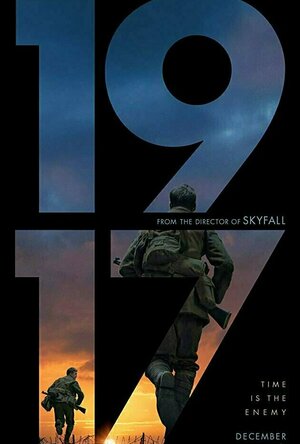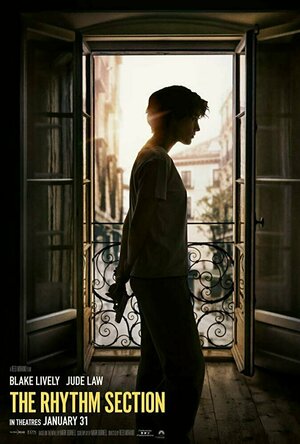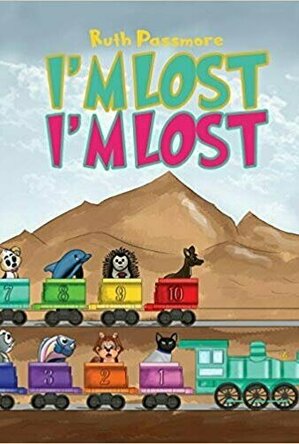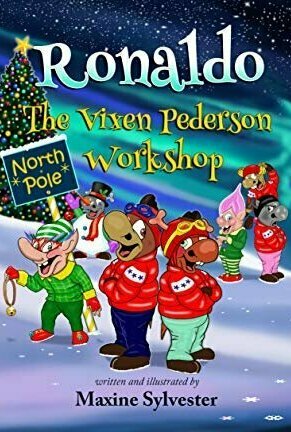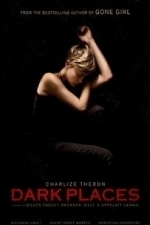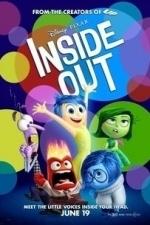Search
Search results
Lee (2222 KP) rated 1917 (2020) in Movies
Jan 11, 2020
British soldiers Schofield (George MacKay) and Blake (Dean-Charles Chapman) are taking a well earned rest in a peaceful French field when they are summoned to a meeting down in the trenches with General Erinmore (Colin Firth). Having believed that the Germans had retreated, and were now on the run, the General has now learned that they are in fact armed to the teeth and lying in wait for the unsuspecting battalion of 1600 Brits who are preparing to advance on them. Unfortunately, that battalion is quite a distance across country, and with telephone lines currently out of action, Blake and Schofield have been tasked by the General with delivering the message to call off the attack. And the reason for choosing Blake? His brother is one of the 1600 likely to meet their death if the message isn’t received before they attack the following morning.
The big talking point surrounding 1917 has been the ‘single shot’ effect that it uses in order to tell its story. We effectively follow Blake and Schofield in real time as they undertake their mission, with only a single camera shot tracking them, and only noticeably cutting away just once. The result is outstanding, delivering a seamless and fully immersive experience unlike anything you’ve experienced before, outside of a first person shooter video game.
Late last year, a short behind the scenes video for 1917 was released, showing how they’d used cameras hanging from wires, which were then passed to guys on foot, then to guys on vehicles, back and forth in order to achieve the effect. The result is that the camera glides effortlessly around the soldiers in the trenches and on the battlefields, through barbed wire and across bodies of water filled with rotting corpses. You feel the tension and all of the emotion right there, right alongside the soldiers who are experiencing it. It’s a truly amazing technical achievement.
Their journey takes them across no mans land, across the war-torn countryside, avoiding danger and all other obstacles in their way. And it’s edge of seat stuff, aided by an amazing heart pumping score and that incredible camera work. Hats off to George Mackay as Schofield too, who carries the majority of the movie and is really put through the wringer.
1917 has already earned itself a Golden Globe, and nine BAFTA nominations, just this last week alone. And it deserves it all. Bold, ambitious storytelling, and an early contender for this years best movie.
The big talking point surrounding 1917 has been the ‘single shot’ effect that it uses in order to tell its story. We effectively follow Blake and Schofield in real time as they undertake their mission, with only a single camera shot tracking them, and only noticeably cutting away just once. The result is outstanding, delivering a seamless and fully immersive experience unlike anything you’ve experienced before, outside of a first person shooter video game.
Late last year, a short behind the scenes video for 1917 was released, showing how they’d used cameras hanging from wires, which were then passed to guys on foot, then to guys on vehicles, back and forth in order to achieve the effect. The result is that the camera glides effortlessly around the soldiers in the trenches and on the battlefields, through barbed wire and across bodies of water filled with rotting corpses. You feel the tension and all of the emotion right there, right alongside the soldiers who are experiencing it. It’s a truly amazing technical achievement.
Their journey takes them across no mans land, across the war-torn countryside, avoiding danger and all other obstacles in their way. And it’s edge of seat stuff, aided by an amazing heart pumping score and that incredible camera work. Hats off to George Mackay as Schofield too, who carries the majority of the movie and is really put through the wringer.
1917 has already earned itself a Golden Globe, and nine BAFTA nominations, just this last week alone. And it deserves it all. Bold, ambitious storytelling, and an early contender for this years best movie.
Neon's Nerd Nexus (360 KP) rated The Rhythm Section (2019) in Movies
Feb 2, 2020
Beats Me
The Rhythm Section is mismatch of La Femme Nikita, Atomic Blonde and all the Bourne films however it constantly skips so many beats that it just cant keep up the pace let alone be put in the same league as any of them. I feel the Spy film genre had largely started to become lazy over the last few years it seems like directors go for either style over substance or just replicate whats already been done and The Rhythm Section seems to try its hand at both. Its a film that im not entirely sure we needed because its filled with genre cliches and relocations of scenes/ideas from other films that have done it much better. Our main character for instance is liffted straight from La Femme Nikita and not only is her transformation process almost exactly the same but the way she looks becomes near identical too. Music integration is ripped from Atomic Blonde it just takes place in a different decade and what litte action sequences there are have been seen in the Bourne films. So as you can imagine I spent most of the film sat thinking "what is the point?", "why do I need to see this again?" and as the film traveled along the same old tracks boredom and fatigue started to settle in. Now im not saying Blake Lively or Jude Law are bad far from it they are both just miscast and deserve much better than this (if anything their scenes and chemistry together are the only thing saving this movie from being a total wash out). Theres almost no point in talking about the story because its of the most generic forgettable kind and while there is some suspense and excitement to be had its in relatively brief burts for a film that has a run time of nearly two hours. During these two hours nothing really happenes either and thats its biggest problem nothing feels like its been achieved and its final pay off especially feels disappointingly weak and higly unfulfilling. I would say theres about 3 short action scenes total and while the fight choreography is splendid and the car chase is exhilarating they are over in a flash and you are again subject to tedium before you arrive at another. End of the day I feel this movie wasted my time and while its not by any means horrible its just extremely unnecessary. Even last years Anna was way more fun and exciting than this.
Night Reader Reviews (683 KP) rated I'm Lost I'm Lost in Books
Jan 9, 2020
Im Lost Im Lost by Ruth Passmore is a little bit on the misleading side. The cover of this book depicts animals and a train. Potential readers should be aware that although the front cover depicts a train the book has absolutely nothing to do with them (a big disappointment to my two-year-old who loves trains). I know you should never judge a book by its cover by a childrens book may not be the best idea to practice that idea. At the same time, this is a counting book and aside from the numbers on the train cars, the front cover does not hint at this at all, although the back of the book dose.
Baby animals are lost and trying to find their way home in this short counting book. Readers start with a classical animal issue, a cat stuck in a tree. With the aid of very simple illustrations, readers are introduced to nine other animal species, ending with ten baby kangaroos.
What I liked best it that the idea behind this book is great. Counting is a fundamental skill that all children must learn and this book does so in a fun way. Children frequently have a fascination with animals and this book mixes animals with learning in a way children would not notice. The repetitive pattern is also nice for children. What I did not like is that some of the choices in animal types are questionable as they could be difficult for young children to read such as tortoises, hedgehogs, and kangaroos. Also on six out of ten pages, a specific number of animals is given but technically it is wrong. For example page, one says there is one cat stuck and a friend (witch according to the picture is also a cat) helps it, the same issue arises on multiple pages (page three has four fish on it not just the three that are lost). This is very confusing to young children.
Toddlers and their parents are the target readers for this book. Parents will enjoy reading this counting book to their young children. Young readers will enjoy the repetitive pattern of the story. The names of some animals may prove difficult to some young readers and they may need help if reading it on their own. I give this book a 1 out of 2 rating. Although a cute book, I would not necessarily recommend it as an educational book. While there is nothing wrong with the text, the illustrations could be confusing when it comes to counting.
https://nightreaderreviews.blogspot.com
Baby animals are lost and trying to find their way home in this short counting book. Readers start with a classical animal issue, a cat stuck in a tree. With the aid of very simple illustrations, readers are introduced to nine other animal species, ending with ten baby kangaroos.
What I liked best it that the idea behind this book is great. Counting is a fundamental skill that all children must learn and this book does so in a fun way. Children frequently have a fascination with animals and this book mixes animals with learning in a way children would not notice. The repetitive pattern is also nice for children. What I did not like is that some of the choices in animal types are questionable as they could be difficult for young children to read such as tortoises, hedgehogs, and kangaroos. Also on six out of ten pages, a specific number of animals is given but technically it is wrong. For example page, one says there is one cat stuck and a friend (witch according to the picture is also a cat) helps it, the same issue arises on multiple pages (page three has four fish on it not just the three that are lost). This is very confusing to young children.
Toddlers and their parents are the target readers for this book. Parents will enjoy reading this counting book to their young children. Young readers will enjoy the repetitive pattern of the story. The names of some animals may prove difficult to some young readers and they may need help if reading it on their own. I give this book a 1 out of 2 rating. Although a cute book, I would not necessarily recommend it as an educational book. While there is nothing wrong with the text, the illustrations could be confusing when it comes to counting.
https://nightreaderreviews.blogspot.com
Emma @ The Movies (1786 KP) rated Playing with Fire (2019) in Movies
Jan 9, 2020
Seeing the trailer for this I was mildly excited, this sort of daft family humour holds a place in my heart and it looked like I was going to get another film to add to the "pick me up" watchlist. But oh my, everything about this experience rubbed me the wrong way.
Jake Carson runs a rugged group of smokejumpers that swoop into action and stop fires from taking hold. On their latest callout they find a cabin about to be engulfed by flames and trapped inside are three children in need of help.
Following the rules, Jake calls Child Protective Services, but being so remote they won't be able to get to them quickly. It's now their duty to keep the three of them safe until they arrive. Four grown men, three kids... what could possibly go wrong?
Where to start? How about that humour I was looking forward to? Or perhaps the severe lack of it. Over the whole runtime I laughed more at the end credits that I did at the whole film. Keegan-Michael Key is by far the funniest thing about the film, but it still isn't a perfect part. Key's way of sliding into scenes and just taking over was excellent, it made me smile, but when these moments started he was funny with just the right amount of over the top but the script would quite often throw him over that fine line and it became tiresome.
John Cena generally isn't bad when it comes to comedy offerings, but in Playing With Fire he's very stiff even for the by-the-books character he's playing. It felt like Jake had been made too straight-laced, he needs to make the transition from uptight to more relaxed but they could have brought it down just one step and it would have been something a lot easier to watch.
Brianna Hildebrand plays the oldest of the rescued children, Brynn. She gives a solid performance and probably has the best character overall, no frustrating quirks, nothing over the top. While she manages to make a good show of it being up against the over the top nature of everything else means it gets lost in the background.
While there might be a twist on the sort of story it doesn't feel new in any respects. I'm feeling rather let down with the whole thing but thankfully we're not short of other films that do this exact thing.
Originally posted on: https://emmaatthemovies.blogspot.com/2020/01/playing-with-fire-movie-review.html
Jake Carson runs a rugged group of smokejumpers that swoop into action and stop fires from taking hold. On their latest callout they find a cabin about to be engulfed by flames and trapped inside are three children in need of help.
Following the rules, Jake calls Child Protective Services, but being so remote they won't be able to get to them quickly. It's now their duty to keep the three of them safe until they arrive. Four grown men, three kids... what could possibly go wrong?
Where to start? How about that humour I was looking forward to? Or perhaps the severe lack of it. Over the whole runtime I laughed more at the end credits that I did at the whole film. Keegan-Michael Key is by far the funniest thing about the film, but it still isn't a perfect part. Key's way of sliding into scenes and just taking over was excellent, it made me smile, but when these moments started he was funny with just the right amount of over the top but the script would quite often throw him over that fine line and it became tiresome.
John Cena generally isn't bad when it comes to comedy offerings, but in Playing With Fire he's very stiff even for the by-the-books character he's playing. It felt like Jake had been made too straight-laced, he needs to make the transition from uptight to more relaxed but they could have brought it down just one step and it would have been something a lot easier to watch.
Brianna Hildebrand plays the oldest of the rescued children, Brynn. She gives a solid performance and probably has the best character overall, no frustrating quirks, nothing over the top. While she manages to make a good show of it being up against the over the top nature of everything else means it gets lost in the background.
While there might be a twist on the sort of story it doesn't feel new in any respects. I'm feeling rather let down with the whole thing but thankfully we're not short of other films that do this exact thing.
Originally posted on: https://emmaatthemovies.blogspot.com/2020/01/playing-with-fire-movie-review.html
Night Reader Reviews (683 KP) rated Ronaldo: The Vixen Pederson Workshop in Books
Jan 10, 2020
Honest Review for Free Copy of Book
Ronaldo: The Vixen Peterson Workshop is another amazing book by Maxine Sylvester. It is short, fun, and carries some wonderful messages to its readers. Read it as a stand-alone book or part of the series, either way, this is one book you don’t want to miss.
Ronaldo and Rudi take readers to the North Pole as they take part in The Vixen Peterson Workshop, focusing on teamwork. The young reindeer are all put into teams and as it happens Ronaldo’s team gets the one cadet that no one wants, Cupid. Poor Cupid is a sweet reindeer with a wonderful attitude, but a terrible flyer. All the members of Ronaldo’s team look to him for guidance with hopes that they may still win the race at the end of the workshop.
Ronaldo befriends Cupid and tries his best to help her. Finally, he discovers why Cupid has so many problems with flying and can help her correct the issue. As luck would have it Ronaldo has a score throat the day of the big race and is unable to lead his team. He gives up his position to Cupid which builds her confidence even more.
I loved how Ronaldo not only befriends Cupid and tires to help her but also stands up for her, even when she is not around. There are very few people who will do something like that anymore and it is a lesson that everyone needs to learn, especially children. It is a rare occurrence that I can truly say there is nothing that I did not like about this book. In previous Ronaldo books I have mentioned that I don’t like the fart jokes and while I could still do without them, they have become a common occurance in this series that I have come to expect.
Just like the rest of the series, this book is great for elementary students. There may be a couple of words that they need help with but overall it shouldn’t be a problem. Alternatively, it would be great for parents to read to their children. I rate this book with a perfect 4 out of 4 once again. This book is wonderful. The story is fun, yet packed full of strong messages. It offers many learning opportunities for children and discussion points for parents.
https://www.facebook.com/nightreaderreviews
https://www.nightreaderreviews.blogspot.com
Ronaldo and Rudi take readers to the North Pole as they take part in The Vixen Peterson Workshop, focusing on teamwork. The young reindeer are all put into teams and as it happens Ronaldo’s team gets the one cadet that no one wants, Cupid. Poor Cupid is a sweet reindeer with a wonderful attitude, but a terrible flyer. All the members of Ronaldo’s team look to him for guidance with hopes that they may still win the race at the end of the workshop.
Ronaldo befriends Cupid and tries his best to help her. Finally, he discovers why Cupid has so many problems with flying and can help her correct the issue. As luck would have it Ronaldo has a score throat the day of the big race and is unable to lead his team. He gives up his position to Cupid which builds her confidence even more.
I loved how Ronaldo not only befriends Cupid and tires to help her but also stands up for her, even when she is not around. There are very few people who will do something like that anymore and it is a lesson that everyone needs to learn, especially children. It is a rare occurrence that I can truly say there is nothing that I did not like about this book. In previous Ronaldo books I have mentioned that I don’t like the fart jokes and while I could still do without them, they have become a common occurance in this series that I have come to expect.
Just like the rest of the series, this book is great for elementary students. There may be a couple of words that they need help with but overall it shouldn’t be a problem. Alternatively, it would be great for parents to read to their children. I rate this book with a perfect 4 out of 4 once again. This book is wonderful. The story is fun, yet packed full of strong messages. It offers many learning opportunities for children and discussion points for parents.
https://www.facebook.com/nightreaderreviews
https://www.nightreaderreviews.blogspot.com
JT (287 KP) rated Real Steel (2011) in Movies
Mar 10, 2020
Michael Bay, take note, this is how to make a proper film about robots beating the living shit out of each other. Based on the Richard Matheson short story Steel, this follows the journey of former professional boxer Charlie Kenton (Jackman) who now spends his time in debt, as a promoter for the new sport of robot boxing.
When Charlie meets his 11-year old son Max (Goyo) the two must rediscover themselves and build a relationship strong enough to get them through any of life’s toughest challenges. Let’s get one thing clear right away, this is Levy’s best film to date. Which is not hard when past titles include, both Night at the Museum’s, Date Night and The Pink Panther.
Jackman is strong enough in a role which let’s him flex his muscles from time to time, he’s a rough and rugged character anyway which is why he fits the Charlie Kenton mould so well. Partnered opposite young Max, who has enough cheeky charm and wide eyed looks to seduce any adult in to letting things go his way. But its not just about the Charlie and Max relationship, there is of course ‘Atom’, the sparing robot they discover in a junkyard.
Despite being all metal and wires, there is a strong feeling that Atom has a personality of his own even if it is mirrored by the person standing in front of him. But the scenes that Atom and Max share on screen together are genuine heart felt moments.
There is enough robot smashing mayhem going on through the drama, as Atom beings the road to underdog glory moving from one metal crunching bout to the next. The fights are very well choreographed from no holes barred scrap fights to the glitz and glamour of the Robot Boxing League where the stakes and money are high.
It’s hard not to see the underlying homage to the Rocky franchise, even the final fight which pairs Atom against the mighty Zeus is a robotic version of Balboa Vs Drago, right down to the female Russian, Olga, who sits in his corner. The supporting cast are in effect just that, the chemistry between Kenton and Bailey (Lily) is good, but she’s not really given enough in the script to make her stand out, so sparks are few and far between.
Jackman is likeable and the kid less annoying than others before him, its flashy and packs a punch that produces some great action sequences throughout.
When Charlie meets his 11-year old son Max (Goyo) the two must rediscover themselves and build a relationship strong enough to get them through any of life’s toughest challenges. Let’s get one thing clear right away, this is Levy’s best film to date. Which is not hard when past titles include, both Night at the Museum’s, Date Night and The Pink Panther.
Jackman is strong enough in a role which let’s him flex his muscles from time to time, he’s a rough and rugged character anyway which is why he fits the Charlie Kenton mould so well. Partnered opposite young Max, who has enough cheeky charm and wide eyed looks to seduce any adult in to letting things go his way. But its not just about the Charlie and Max relationship, there is of course ‘Atom’, the sparing robot they discover in a junkyard.
Despite being all metal and wires, there is a strong feeling that Atom has a personality of his own even if it is mirrored by the person standing in front of him. But the scenes that Atom and Max share on screen together are genuine heart felt moments.
There is enough robot smashing mayhem going on through the drama, as Atom beings the road to underdog glory moving from one metal crunching bout to the next. The fights are very well choreographed from no holes barred scrap fights to the glitz and glamour of the Robot Boxing League where the stakes and money are high.
It’s hard not to see the underlying homage to the Rocky franchise, even the final fight which pairs Atom against the mighty Zeus is a robotic version of Balboa Vs Drago, right down to the female Russian, Olga, who sits in his corner. The supporting cast are in effect just that, the chemistry between Kenton and Bailey (Lily) is good, but she’s not really given enough in the script to make her stand out, so sparks are few and far between.
Jackman is likeable and the kid less annoying than others before him, its flashy and packs a punch that produces some great action sequences throughout.
Gareth von Kallenbach (980 KP) rated Dark Places (2015) in Movies
Aug 6, 2019
Although it was exciting to hear “Dark Places” is based on a novel written by the same author who wrote “Gone Girl,” unfortunately it just doesn’t measure up.
Libby Day (Charlize Theron) is the sole survivor of a massacre in which her two sisters and mother (Christina Hendricks) were murdered. Her Satan worshipping brother (Corey Stoll), the most likely suspect, spends his life in prison for the murders.
After living most of her life believing the case is closed, one day Libby is contacted by a group called “The Kill Club.” The group is obsessed with her family’s case and swears they can prove her brother’s innocence.
As Libby goes on a cathartic journey into her own mind and into a case she hardly feels is worth looking into, scenes switch between her memories and her present experience. The plot execution is intricate, yet coherent.
However, the film’s slow pace and lack of climactic scenes frankly starts to become exhausting about midway through. It is a raw and suspenseful drama. But it falls disappointingly short of being a thriller – getting close but never quite finishing.
There are moments of genuine quality, mostly found in the skill of Theron and Hendricks’ acting.
We’ve already seen Theron in similar roles and know she really can do no wrong. She embodies her role as an emotionally charged heroin, and her expressions exude a past riddled with dark memories. It could be said she has been type cast for these roles. This makes it hard to tell if the film would be all that watchable without her in the cast.
Even Theron’s amazing acting isn’t enough to place this film on a glorious pedestal.
The story feels incomplete in many ways while at the same time being quite elaborate in some aspects.
One example – the scenes showing the mother’s experience of hardship provide good background for the main plotline. These scenes are raw and unsettling. Hendricks does an amazing job showing the emotion of a single mother who is continuously beaten down by life.
On the other hand – “The Kill Club,” which is a central part of the plot as it is the catalyst for Theron’s exploration of the case, is hardly elaborated on. This makes its members come off as unconvincing in their roles and the idea of the group becomes a hokey part of the plot. The lack of depth here takes away from Theron’s skillful performance just a bit.
Not a big thrill, I give “Dark Places” 2.5 out of 5 stars.
Libby Day (Charlize Theron) is the sole survivor of a massacre in which her two sisters and mother (Christina Hendricks) were murdered. Her Satan worshipping brother (Corey Stoll), the most likely suspect, spends his life in prison for the murders.
After living most of her life believing the case is closed, one day Libby is contacted by a group called “The Kill Club.” The group is obsessed with her family’s case and swears they can prove her brother’s innocence.
As Libby goes on a cathartic journey into her own mind and into a case she hardly feels is worth looking into, scenes switch between her memories and her present experience. The plot execution is intricate, yet coherent.
However, the film’s slow pace and lack of climactic scenes frankly starts to become exhausting about midway through. It is a raw and suspenseful drama. But it falls disappointingly short of being a thriller – getting close but never quite finishing.
There are moments of genuine quality, mostly found in the skill of Theron and Hendricks’ acting.
We’ve already seen Theron in similar roles and know she really can do no wrong. She embodies her role as an emotionally charged heroin, and her expressions exude a past riddled with dark memories. It could be said she has been type cast for these roles. This makes it hard to tell if the film would be all that watchable without her in the cast.
Even Theron’s amazing acting isn’t enough to place this film on a glorious pedestal.
The story feels incomplete in many ways while at the same time being quite elaborate in some aspects.
One example – the scenes showing the mother’s experience of hardship provide good background for the main plotline. These scenes are raw and unsettling. Hendricks does an amazing job showing the emotion of a single mother who is continuously beaten down by life.
On the other hand – “The Kill Club,” which is a central part of the plot as it is the catalyst for Theron’s exploration of the case, is hardly elaborated on. This makes its members come off as unconvincing in their roles and the idea of the group becomes a hokey part of the plot. The lack of depth here takes away from Theron’s skillful performance just a bit.
Not a big thrill, I give “Dark Places” 2.5 out of 5 stars.
Gareth von Kallenbach (980 KP) rated Inside Out (2015) in Movies
Aug 6, 2019
Have you ever wondered what goes on inside that noggin of yours when your feeling angry, scared, sad or happy even? The producers and directors of Up and Toy Story have delved inside these emotions with their new film Inside Out. It is the latest and greatest film from Disney’s Pixar to open this summer. The film brought in some of the best comedic actors together and strategically placed them in the mind of an eleven year old girl.
Riley is an eleven year old girl from Minnesota. Her parents have made the difficult decision to uproot her and move to San Francisco for her fathers new job. Riley’s life is flipped upside down and inside out. She is guided only by her emotions as most of us are. Her thoughts are being manned by a control room of sorts. Joy (Amy Poehler) keeps everything at bay. As it is her soul purpose to keep Riley happy and all the other emotions away from the controls as much as possible. Although other emotions like Fear (Bill Hader), Anger (Lewis Black), Disgust (Mindy Kaling) and Sadness (Phyllis Smith) tend to creep in from time to time.
Her memories are color-coded specific to each emotion. Core memories are glowing. Sadness has become quite enamored with these glowing core memories and can’t help herself from touching the orbs turning all of the happy core memories into sad memories. As her mind short circuits it paves the path for fear, disgust and anger to take over. Joy must stop this from happening and retrieve core memories that are almost lost. Guiding them along the way is Bing Bong (Richard Kind), Riley’s imaginary friend who was thought to be forgotten.
Inside Out will literally give you a seat on the train of thought and will wind through all the twists and turns of the mind. With such an ambitious idea Pixar has proved once again that they can make a film that can relate to both young and old. It will definitely tug at the heartstrings. It did for me as I was about Riley’s age when I was uprooted to Costa Rica so I hold this film close to my heart. Lots of surprises, laughs and maybe even a few sniffles await you with this film and really shouldn’t be missed. A few hidden surprises also await the true Disney fan. Skip the 3D version not worth the extra couple dollars.
Riley is an eleven year old girl from Minnesota. Her parents have made the difficult decision to uproot her and move to San Francisco for her fathers new job. Riley’s life is flipped upside down and inside out. She is guided only by her emotions as most of us are. Her thoughts are being manned by a control room of sorts. Joy (Amy Poehler) keeps everything at bay. As it is her soul purpose to keep Riley happy and all the other emotions away from the controls as much as possible. Although other emotions like Fear (Bill Hader), Anger (Lewis Black), Disgust (Mindy Kaling) and Sadness (Phyllis Smith) tend to creep in from time to time.
Her memories are color-coded specific to each emotion. Core memories are glowing. Sadness has become quite enamored with these glowing core memories and can’t help herself from touching the orbs turning all of the happy core memories into sad memories. As her mind short circuits it paves the path for fear, disgust and anger to take over. Joy must stop this from happening and retrieve core memories that are almost lost. Guiding them along the way is Bing Bong (Richard Kind), Riley’s imaginary friend who was thought to be forgotten.
Inside Out will literally give you a seat on the train of thought and will wind through all the twists and turns of the mind. With such an ambitious idea Pixar has proved once again that they can make a film that can relate to both young and old. It will definitely tug at the heartstrings. It did for me as I was about Riley’s age when I was uprooted to Costa Rica so I hold this film close to my heart. Lots of surprises, laughs and maybe even a few sniffles await you with this film and really shouldn’t be missed. A few hidden surprises also await the true Disney fan. Skip the 3D version not worth the extra couple dollars.
Gareth von Kallenbach (980 KP) rated How to Train Your Dragon 2 (2014) in Movies
Aug 6, 2019
In 2010, the most unlikely Viking proved that dragons and humans can co-exist in the first How To Train Your Dragon film. Set five years after the original movie, How to Train Your Dragon 2 opens up on the Village of Berk where Vikings and dragons have developed a fond relationship. Hiccup (Jay Baruchel), the nerdy chieftain’s son, is now a few years older and has made himself a winged suit and spends his days soaring the skies with his beloved dragon, Toothless. This film brings together the original gang of friends, Astrid (America Ferrera), Fishlegs (Christopher Mintz-Plasse), Snotlout (Jonah Hill), and twins Ruffnut and Tuffnut (Kristen Wiig and TJ Miller). Still at odds with his expectations, Hiccup’s father Stoick (Gerard Butler) demands that he begins the preparations and training to follow in his footsteps and become chief of their Village. This is not the future Hiccup sees for himself, he and Toothless flee the Village and explore the world and stumble upon a cave full of dragons and encounter a Mysterious Dragon Rider (Cate Blanchett), with a similar affinity for dragons. Hiccup has realized that war still exists between dragons and men beyond the borders of his Village. He attempts to negotiate peace with dragon-hunter Drago (Djimon Hounsou), who is threatening to invade the village with his army.
Writer/director Dean DeBlois helms the reins on this one; he has opened up the story without losing the tone of the original. The true delight is in the details, the visual effects are stunning; a prime example of how much computer generated animation has progressed in such a short amount of time. From the diverse landscapes to the design of the characters were absolutely breathtaking. Even the most minute details, such as the texture from the armor, to the scales on the dragons, even the battles scars on the soldiers are so vividly expressed, they assisted in creating the most dramatic and heartfelt moments.
The overall theme has matured from the first film with a continually surprising plot. In the first go around, Hiccup learned to be himself; in this installment Hiccup is taught to become a better version of himself when those unbreakable bonds are tested, and the line between good vs. evil is skewed.
I wouldn’t say there is much training in the sequel, however there is still a wonderful message of friendship, love, and loyalty. Some of the material may be a little too dark, and there were moments that spent way too much time developing the characters which can be pretty taxing for young children.
A worthy follow up….
Writer/director Dean DeBlois helms the reins on this one; he has opened up the story without losing the tone of the original. The true delight is in the details, the visual effects are stunning; a prime example of how much computer generated animation has progressed in such a short amount of time. From the diverse landscapes to the design of the characters were absolutely breathtaking. Even the most minute details, such as the texture from the armor, to the scales on the dragons, even the battles scars on the soldiers are so vividly expressed, they assisted in creating the most dramatic and heartfelt moments.
The overall theme has matured from the first film with a continually surprising plot. In the first go around, Hiccup learned to be himself; in this installment Hiccup is taught to become a better version of himself when those unbreakable bonds are tested, and the line between good vs. evil is skewed.
I wouldn’t say there is much training in the sequel, however there is still a wonderful message of friendship, love, and loyalty. Some of the material may be a little too dark, and there were moments that spent way too much time developing the characters which can be pretty taxing for young children.
A worthy follow up….

Toddler Bible – The Carry Along Bible
Book and Education
App
Hear angry lions roaring in the story of Daniel in the lions den! See Jesus in the boat as he stills...
